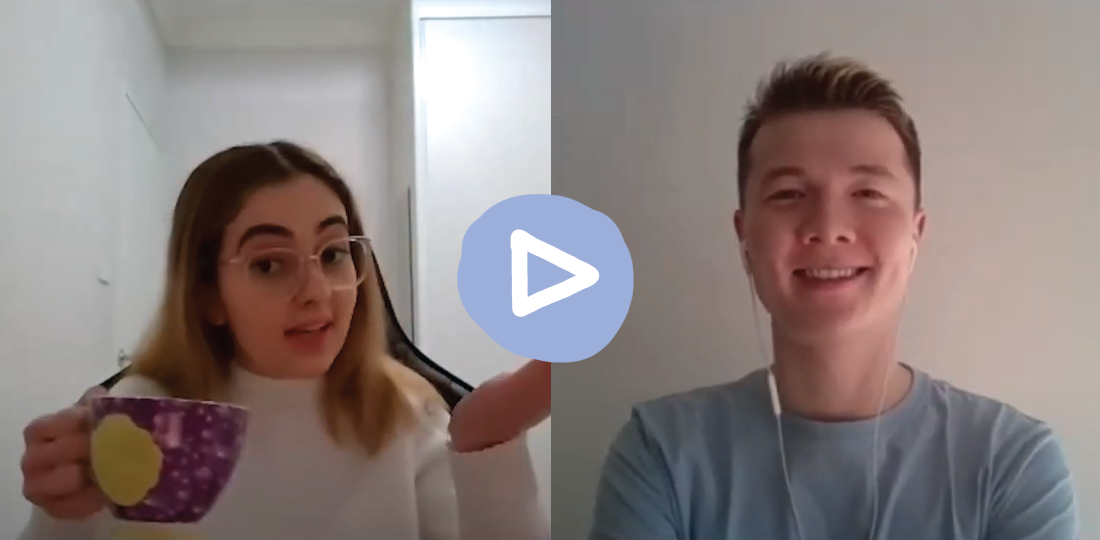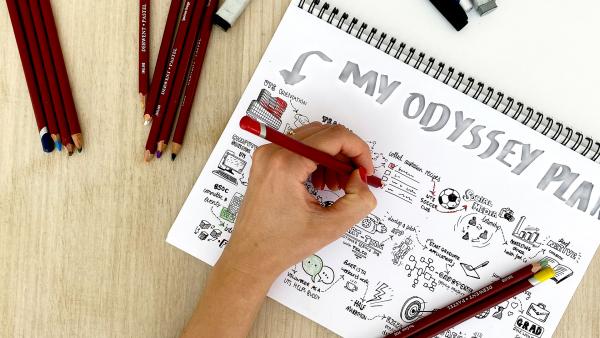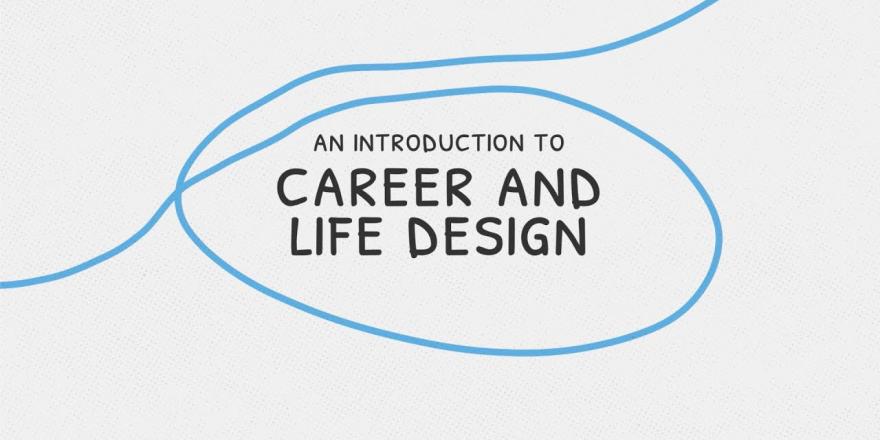-
Working through transition points in life such as starting and finishing uni, considering a new career opportunity or making a career change can be challenging. It requires us to build self-awareness, make decisions and take action, and at the same time navigate the endless options that our fast-changing world offers. Career and life decision making is truly a wicked problem.
Designing our lives is about figuring out what we want to explore as our lives unfold. It's also about recognising that we’re not going to do this just once. There's going to be multiple points throughout our lives where we might need to change direction or reconsider the path we’re on. So it makes sense to have a process to tackle that problem.
Career and life design utilises design thinking, and gives us a method for figuring out where we want to be and how we might get there. It’s based around five core mindsets, and a variety of activities, to help self-direct our lives. Let’s take a closer look at the process steps first.We start with empathise. Empathising is human-centred. It's about understanding people's perspectives and needs. So we listen, we observe, we interview, and in life design, we need to empathise with ourselves. We need to be really clear on what's important to us and what's going to drive us forward in this process.
We then need to define our problem. This is where we need to articulate what it is that we're trying to tackle. In the case of life design, it might be something related to what you're going to study, where you're going to live, what job you're going to do next. So we need to get quite specific with what the problem is that we're trying to solve right now.
Ideating is where we get very creative. We need to come up with lots of different potential solutions and so initially we want to go quite out there, we want to go wild with as many different ideas as possible, and not restrict ourselves too much. From there we can start to narrow down by selecting the ones that we're most excited about, and take those forward to the next step.
Up next is prototyping, which is all about conducting mini-experiments. We want to try out some of our favourite ideas in small ways without too much investment. In career and life design, a prototype could be having a career conversation with someone, and asking them questions to understand their experience of a particular job, industry or environment. It could be shadowing someone for a day to see firsthand what their typical day is like. Or it could be undertaking a number of bite sized activities that are going to give us some insight into a different life or career.
After prototyping, we move on to testing. This is where we look at what we learned from our prototypes and decide on some options that we want to invest in a little more significantly. This is how we narrow down to a manageable set of options, and can make some decisions about where we want to take things.
In career and life design, there's an initial starting point for all of this that's really critical, and that’s accept. This step is about accepting the constraints that currently exist. Even though we might not be entirely happy with where we are, we might have regrets, or there might be things happening in the context around us that we can't control. We need to accept those, and say, I'm here. This is where I am right now and this is where I'm going to move forward from.
Now that we’ve learnt the process, there are also certain mindsets that we need to bring to that process in order to be a life designer. Here are 5 important mindsets that help designers to think differently.
First, curiosity is essential. We need to be very interested in what's happening around us. We need to be open to explore things. If we want the best possible ideas to try out, we need to have an inquisitive mind and be ready to learn.
Second is radical collaboration. We want to acknowledge that we’re probably going to do better if we can draw from different perspectives and have a diverse group of people to work with. Generating new, creative ideas is best done with others, and with people who are different to ourselves.
Next, bias toward action. This is where we say, and I'm not going to overthink or analyse or research for too long. I’m going to learn through doing, and take action to get to the next step.
Then, mindfulness of process. Every now and then we do need to pause and ask, where am I at in this process? Am I ready to move forward to the next step? Do I need to go back and revisit previous ideas? What have I learned so far and where can I take things from here?
And finally, re-framing. This is where we need to accept that occasionally we do get stuck in one way of thinking and it's hard to move forward. So it's about taking a step back and asking can I approach this problem from another angle? And working with others also helps with this, to be able to see different perspectives.
You now have everything you need- a toolkit of designer mindsets and a creative process to dive in. Join the growing number of career and life designers at UTS by tapping into your curiosity, testing out ideas, and exploring how you can design a fulfilling a career and life!
-
What is Career and Life Design?
Inspired by Stanford University’s 'Designing Your Life' program, Career and Life Design is a methodology that uses design thinking to help us build a well-lived, joyful life. Watch this video by UTS Careers to find out more.
-
Events and workshops
Throughout the year, UTS Careers runs a series of Career and Life Design events and workshops, to help you address the wicked problem of designing your career and life. Click below to see the full list of upcoming activities for you to participate in.
-

-

-
Coffee chats
Meet UTS Careers intern, Melanie. Throughout a series of conversations (and a countless number of coffees consumed), Melanie explores some of the key concepts behind Career and Life Design at UTS, with a range of different people, from a variety of industries.



